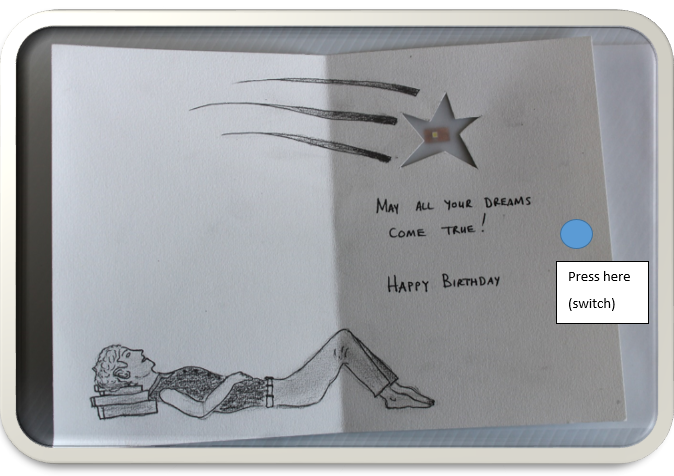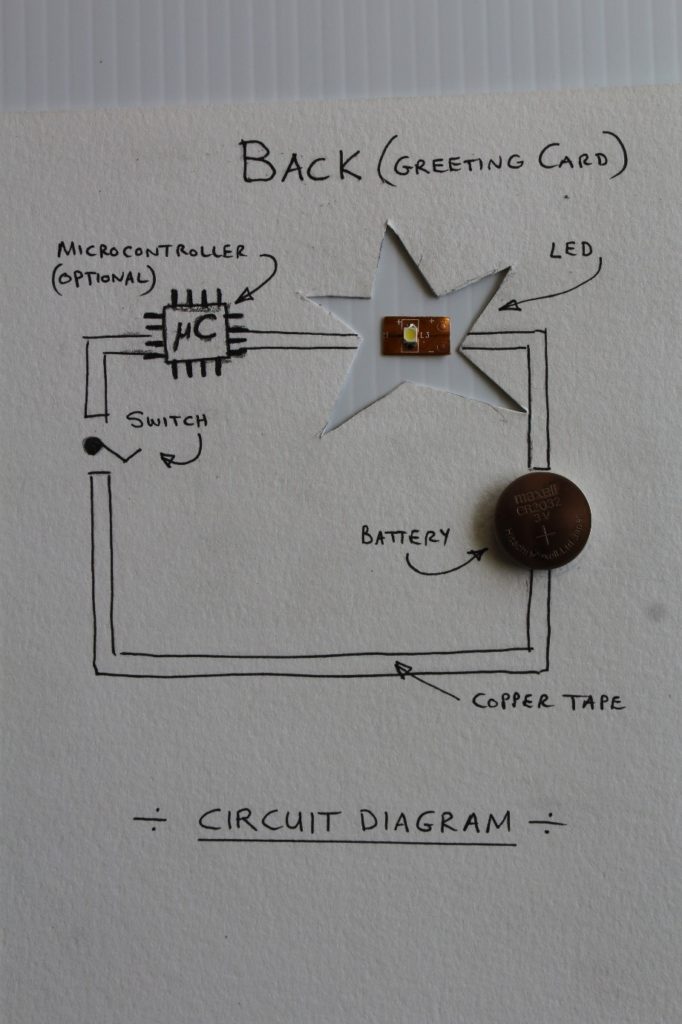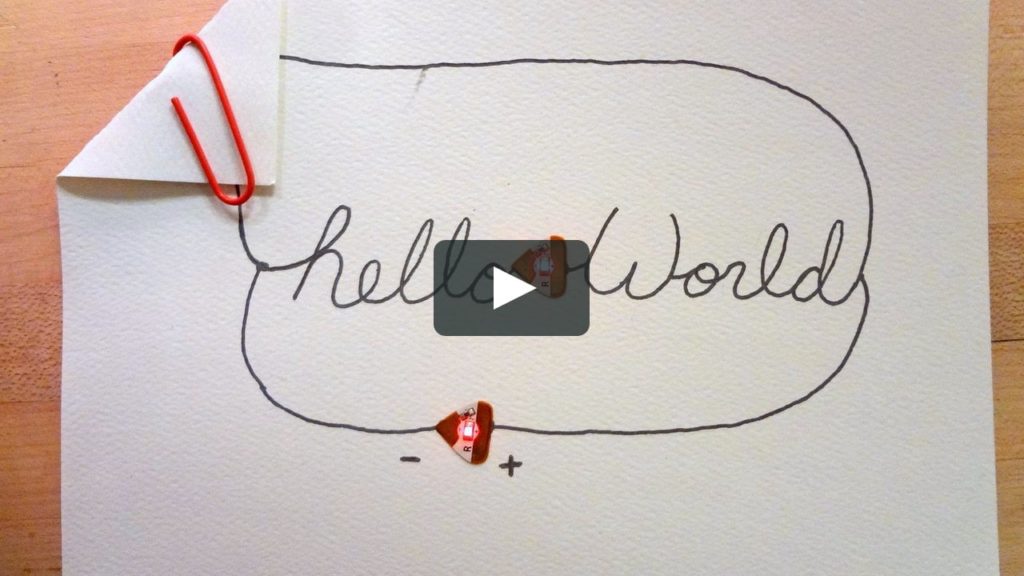Description
Lesson objectives:
- Research and investigate simple electrical circuits
- Design a simple greeting card containing a Led light (or more) that could light up
- Develop artistic skills (arts and crafts). Explore cardmaking ideas
- Learn how a coin battery, copper tape (sticky), a switch, and a Led light can be connected into a working electrical circuit
- Extension of the introductory lesson: Once students understand the basics, they are inspired to explore microprocessors (like a Picaxe, Micro:bit, Raspberry Pi, and Arduino). Students could be challenged to include computer programming into a greetings card (advanced lessons to follow). See the eBook by the author – a full extension into microprocessors/pocket computes, e-textiles, are provided and much more (Five House Publishing):
- The basic lesson is suitable for year 12-year-old to year 16-year-old students
- Integrated learning will be explored
- Global Citizenship, Collaboration, and Critical Thinking will be explored
PRIMARY SCHOOL STUDENTS: This lesson is also suitable for younger students (senior primary school)
Contents
Synopsis: Page 2
Lesson objectives: Page 6
DVC NCEA LEVEL 1 CREDITS (CONTEXT NEW ZEALAND SECONDARY SCHOOL): 16-year-old students. 8
Please study the simple circuit below: 9
VISIT THIS BLOG: 9
Getting started with copper tape for paper electronics. 10
TUTORIAL ON CHIBITRONICS WEBSITE: 10
LED LIGHTS AND LIGHTING (ELECTRICITY, DIAGRAMS, AND LIGHTING): LED, BATTERY, AND COPPER TAPE GREETING CARD.. 12
The brief. 12
THE LAYOUT OF YOUR PRESENTATION, INCLUDING THE GREETING CARD: 12
GREETING CARD DESIGN ON SKETCHUP: 13
IMPORTANT: VIEW THIS TUTORIAL BEFORE YOU CONTINUE TO READ FURTHER. 18
Typical circuit illustration on the back of the card: 19
Achievement Standard (from NZQA website). New Zealand High School Context. 20
Background of the incandescent bulb and LED LIGHTS: 23
WHAT IS AN LED LIGHT?. 26
ENERGY EFFICIENCY OF LED’S. 26
WHAT IS A DYNAMO?. 29
Teacher’s experience with teaching students about LED’s: 31
STARTING THE LED GREETING CARD PROJECT. 32
List of Ideas for LED lights and sound (basic electronics) projects: 32
Powered sketchbook: Video. 33
FLASHING LED GREETING CARD PROJECT: Integrated learning. 33
Students love having fun with circuits, LED lights, switches, buzzers and microcontrollers. 34
How to create the greetings card: 39
‘Cupcake Paper Circuit Card with LED Light’ 39
WHAT IS ‘STEM’ (Science, Technology, Engineering and Mathematics). 39
In simple terms, we are going to take a project approach in this lesson and apply Science. Technology, Engineering & Maths to learn about electricity, LED lights, batteries, making greeting cards, and more. 40
Modern-day pop-art beauty: By Sandra Chevrier. 41
OPTIONAL: PICAXE (or Arduino). 42
WHAT IS A PICAXE?. 43
HOW TO PROGRAM A MICROCONTROLLER USING PICAXE USB CABLE AND FREE SOFTWARE (BLOCKLY APP)? 45
Create movement (vibrating) for a greetings CARD ‘Washing machine.’ 46
CHIBITRONICS: 46
LAWN FAWN: 47
ALTERNATIVE TO COPPER TAPE: A ‘COPPER PEN’ (BRAND – CIRCUIT SCRIBE). 50
Templates for these projects – CHIBITRONICS: 51
FOOD TECHNOLOGY AND LED DESIGN IDEAS: LED LIT UP CAKES (COMBINING ELECTRICAL CIRCUITRY AND BAKING) 52
MORE PROJECTS INCLUDING LED LIGHTS AND ELECTRIC CIRCUITRY (FOR PRIMARY SCHOOL STUDENTS) 55
SQUISHY CIRCUITS. 56
THE HACKTORY. 57
WHAT ARE SQUISHY CIRCUITS?. 58
Playdoughs. 58
INSULATIVE DOUGH.. 58
BOOKS ON SQUISHY CIRCUITS: 59
Procedure: 60
STEM, STEAM, AND ESTEAM… 61
EXCITING CREATIVE AND INNOVATIVE DESIGN BRIEF: 62
YOUR SOLUTION TO THIS DESIGN BRIEF COULD INCLUDE THE FOLLOWING STEPS, MEDIA AND MODES: 62
ALTERNATIVE APPROACH: Tell your story through sculpture or 3-D model. 63
MOVING FROM THE BASIC CIRCUITRY TO MORE ADVANCED ELECTRICAL AND ELECTRONIC COMPONENTS AND SYSTEMS. 64
What is Arduino?. 64
ARDUINO PROGRAMMING SETS: 64
YOU CAN LEARN ARDUINO IN 15 MINUTES: 65
Are you interested in electronics?. 65
FREE SOFTWARE AVAILABLE FORM THE ARDUINO WEBSITE: 66
YOUR NEXT QUESTION IS PROBABLY “HOW DO I INSTALL THE MICROPROCESSOR TO MY PROJECT?” 68
Some tips: 74
Global Citizenship, Sustainability and Taking Action. 77
What is Global Citizenship?. 77
Practical application of Global Citizenship in Technology. 78
How can we make the concept of global citizenship elementary and practical for primary- and secondary school students? Any ideas?. 78
Sustainability. 79
What is sustainability?. 79
RECOMMENDED BOOKS: 80
ABOUT THE TEACHER AND AUTHOR: Page 80
Typical soldering station. https://youtu.be/Qps9woUGkvI
Notes from YouTube:
Soldering Tutorial for Beginners: Five Easy Steps
If you’ve ever wondered how to solder electronic components, you’ve come to the right place! This video breaks down the soldering technique into five steps. I’ll show you how to solder through-hole components as well as how to solder wire.











